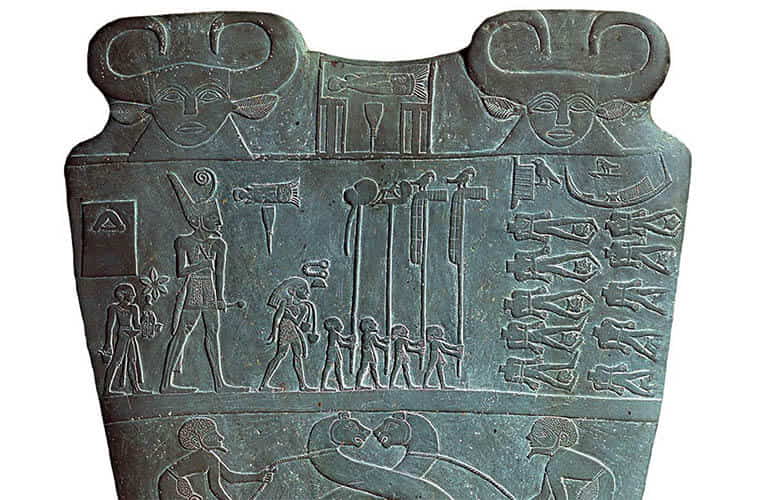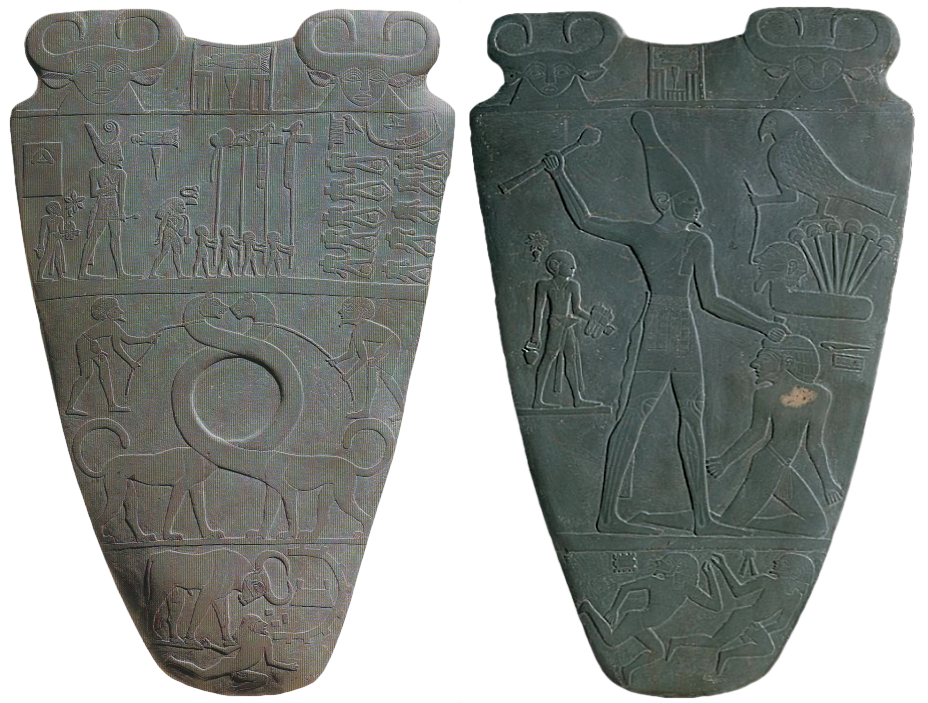Narmer, without a doubt, holds a significant place in the history of ancient Egypt, where he is highly regarded and admired. He is recognized as the influential leader who established the foundation for the Dynastic Period, during which a succession of pharaohs governed the land for many years. While scholars have discussed his exact position in the chronology of ancient Egypt, his lasting impact and undeniable legacy are beyond question.
One of the most significant contributions Narmer made to Egyptian history was his role as one of the earliest kings to etch his name into the annals of time through inscriptions. These inscriptions, which are notably adorning stone palettes, portray Narmer as a figure of immense power and triumph. The most iconic of these artifacts is the Narmer Palette, which is hailed as a masterpiece of ancient Egyptian artistry and is now enshrined within the hallowed halls of the Egyptian Museum in Cairo.
The Narmer Palette
The Narmer Palette not only serves as a testament to Narmer’s prowess but also illuminates his martial prowess and strategic acumen. Depicted as a victorious warrior king, Narmer is often portrayed donning the fabled double crown of Upper and Lower Egypt, hinting at his potential role as the unifier of these disparate regions into a cohesive kingdom. This unification was a significant milestone in Egyptian history, as it marked the birth of a new era of centralized governance and the establishment of a powerful and enduring dynasty.

Narmer’s legacy extends beyond his military conquests and political achievements. He was also known for his patronage of the arts, which flourished during his reign. Under his tutelage, Egyptian art reached new heights, with craftsmen and artisans creating some of the most exquisite and intricate works of art that the world has ever seen. Many of these works have survived to this day, offering us a glimpse into the beauty and sophistication of ancient Egyptian civilization.
Narmer is a name that echoes through the halls of history. His reign marked a turning point in the development of one of the most fascinating civilizations in human history. The ancient Egyptians were a people of great ambition, creativity, and ingenuity, and it was Narmer who laid the foundation for their ascent to greatness.
Despite the fact that Narmer’s accomplishments were many and his legacy is still felt today, there are still so many mysteries surrounding his life and origins. Historians and scholars have long debated the circumstances of his ascent to power, and the details of his early life remain shrouded in speculation and conjecture.
Some have suggested that Narmer may have been born into the royal lineage of the powerful city of Hierakonpolis, which was located in Upper Egypt. Others believe that his rise to power was the result of his military prowess and his ability to conquer and unify the various factions that were vying for control over the land.
Regardless of how he came to power, there is no denying that Narmer left an indelible mark on the history of Egypt. His reign ushered in a new era of prosperity, growth, and cultural development, and his vision and leadership helped to create the foundation for one of the most enduring and influential civilizations in the world.

Final Thoughts
Today, Narmer stands as a symbol of power and vision, an architect of the ancient Egyptian legacy whose influence echoes across the ages. His accomplishments may be shrouded in mystery, but his impact on the course of human history is undeniable. From the grandeur of the pyramids to the ascendancy of the pharaonic dynasties, there is no doubt that Narmer played a pivotal role in shaping the destiny of one of the world’s greatest civilizations.
